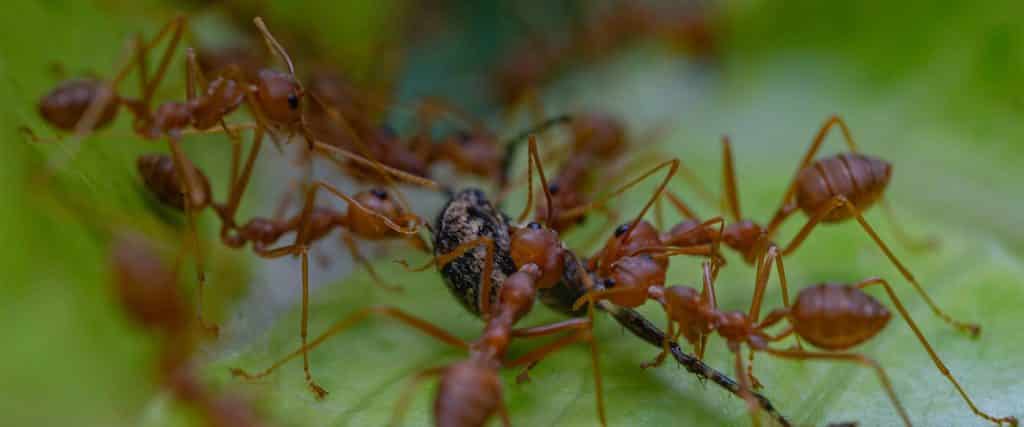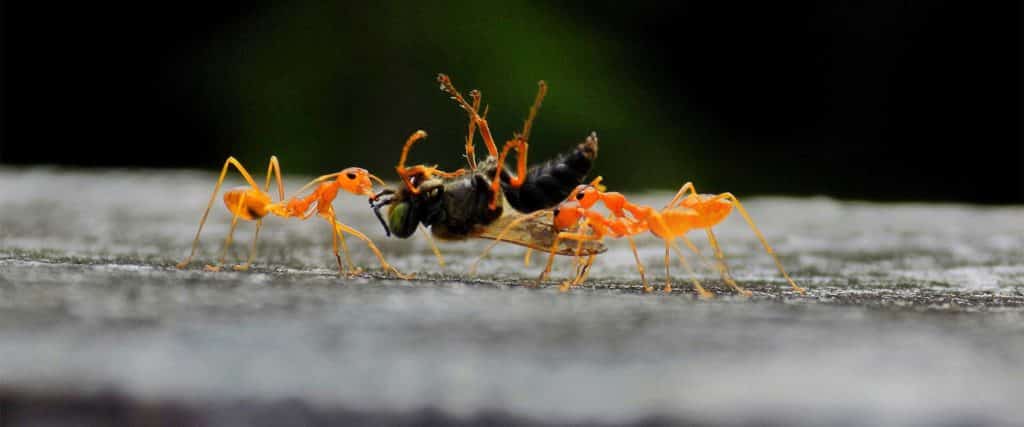Red ants are much more than just pests: they pose a real threat to homeowners. These small invaders, known for their aggressiveness and painful stings, can cause significant damage to both the domestic environment and the well-being of residents. Their presence is often synonymous with a long fight to eradicate them; a fight that requires adequate weapons and efficient strategies. In this article, we’ll cover the key points to identify these insects, understand the extent of the problems they can cause, and discover the most effective methods to repel them… or even exterminate them.
Red Ant Identification

Red… This bright colour is not only a warning sign in nature, it is also a wake-up call in our daily lives when we talk about certain species of ants. Red ants (including the dreaded Solenopsis invicta, or fire ant) are easily distinguished by their reddish to brownish coloration. They are usually between 2 and 6 millimeters in length. But don’t be fooled by their small size; These creatures are equipped with powerful mandibles and do not hesitate to use them.
The precise identification of these ants involves observing their mounds: characteristic granular structures, often located near humid areas or in full sun. Another striking characteristic is their aggressive behavior when disturbed to their nest… A warning not to be taken lightly! In case of doubt (because not all red ants are harmful), it is wise to call on an expert in pest control for a formal identification.
Problems related to red ants
The presence of red ants is not limited to visual discomfort or fear of stings; It raises a more serious range of problems. On the one hand, they are responsible for bites that can cause a severe – or even anaphylactic – allergic reaction in humans in certain sensitive individuals… A significant health risk. On the other hand, these insects are capable of inflicting significant damage to domestic infrastructure by digging their underground tunnels.
Let’s be clear: the fight against these ants is not only a question of comfort (although that is already enough), but also a considerable ecological concern. Red ant colonies can severely disrupt the local ecosystem by displacing or decimating other native insect populations and even threaten small land animals.
Prevention: barriers and good practices

Prevention is better than cure… This popular maxim finds its full meaning in the context of the fight against red ant invasions. Regular garden maintenance (pruning shrubs; pruning; cleaning up organic debris) is essential to reduce potential shelters where they could settle. Care should also be taken to seal any cracks or gaps in the foundation or exterior walls – all possible entry points for these little invaders.
In addition, avoid anything that could attract these intruders to your home: store your food in tightly sealed containers and make sure your garbage cans are well sealed. Don’t forget the importance of good compost bin management, which can quickly turn into a royal feast for a hungry colony!
Eradication strategies
When prevention fails and peaceful coexistence becomes impossible… It’s time to act! Several methods can be used to effectively combat red ant colonies: granular traps, specific ant gels, poisoned baits, etc. Each solution has its advantages and disadvantages; It is therefore advisable to choose the one adapted to your particular situation.
In some extreme cases, professional spraying may be necessary – especially if the invasion reaches a critical level or if it involves public spaces. However, always keep in mind that these chemical treatments should be used with caution in order to limit their impact on the surrounding environment – a delicate balance between efficiency and ecological responsibility.
Towards a controlled coexistence?
Can we really talk about “coexistence” with pests such as red ants? Perhaps we should rather consider a form of “management” or “control” in order to balance our needs with those of the natural world of which we are an integral part… In any case, education (understanding the biological cycle of ants), prevention (adopting daily deterrent practices) and rapid intervention (using proven methods or professional assistance) remain our best weapons in this relentless fight against these small but tough adversaries.
Ultimately, it is essential to keep in mind that coordinated and informed action is crucial in the face of the challenges posed by the nuisances caused by red ants. With diligence and perseverance, it is possible not only to significantly diminish their presence but also – why not – to regain some of that peace disturbed by their incessant intrusions.
